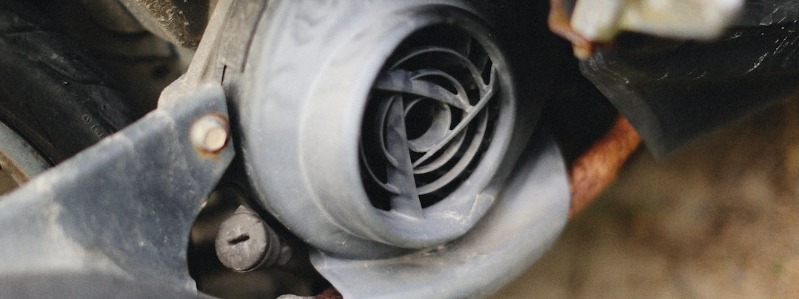Draft Shaft Failure While Driving
Contents
- Draft Shaft Failure While Driving
Many drivers are not aware that the performance of their vehicle’s wheel system is basically dependent on the condition of their car struts and axles. These components are involved in the vehicle’s steering, driving, and braking, linking the engine’s power to the wheels. They carry the whole weight of the vehicle, plus passengers and cargo. If undamaged, these components can last up to 100,000 miles without need for replacement.
Signs and Symptoms of Drive Shaft Failure
Drive shaft failure can be a serious issue, and it’s important to know the signs and symptoms so that you can take action before it becomes a bigger problem.
One of the most common symptoms of drive shaft failure is a noticeable vibration coming from the vehicle. This vibration may be felt throughout the car, but it’s most noticeable in the steering wheel or the floorboards.
Another symptom of drive shaft failure is a clunking or knocking noise that occurs when you shift gears or accelerate. This noise is often a sign that there is a problem with the drive shaft or one of the related components
In some cases, you may also notice that your vehicle is having trouble accelerating or moving forward. This can be a sign that the drive shaft is not functioning properly and needs to be repaired or replaced.
If you notice any of these symptoms while driving, it’s important to pull over as soon as it’s safe to do so and call for assistance. Driving with a faulty drive shaft can be dangerous and lead to further damage to your vehicle.
Understanding drive shaft failure and its causes
The drive shaft of a vehicle is a crucial component that transfers torque from the transmission to the wheels. A failure of the drive shaft can cause serious problems and can even lead to a dangerous accident. Understanding the causes of drive shaft failure is important in preventing it from happening while driving.

One of the most common causes of drive shaft failure is worn or damaged universal joints. These joints connect the drive shaft to the transmission and rear axle; over time, they can wear out and cause the drive shaft to fail. A lack of lubrication or contamination can cause these joints to fail prematurely.
Another cause of drive shaft failure is damage to the drive shaft itself. This can be caused by corrosion, impact damage, or fatigue. A damaged drive shaft can lead to vibration, noise, and, eventually failure.
Improper installation of the drive shaft can also lead to failure. If the drive shaft is not installed correctly, it can become unbalanced and cause excessive vibration. This can lead to premature failure of the drive shaft and other components.
Simply stated, the axles are connected to the front wheels. They transfer the torque from the transmission to the drive wheels. But what happens if your axle breaks while driving? The effect is immediate and dangerous since power is no longer being transferred from the engine to the tires. Controlling the steering of the vehicle will not be possible, and you may find yourself stranded in the middle of the road.
Axle Failure
Preventing axle failure is possible by knowing what to listen for and where to look. If an axle begins to fail while driving, your car will start to pull to one side as one wheel loses power. When the axle breaks completely its corresponding wheel will no longer turn, and although the engine may still run, the car won’t move. You may see smoke coming from the axle and your front tires won’t point in the same direction since one will be completely disconnected.
What do you do if your axle breaks while driving?
Most importantly: Try to get out of the line of traffic if at all possible and call a tow truck.
- Stay calm and keep a firm grip on the steering wheel: The first thing to do is to stay calm and avoid panicking. Keep a firm grip on the steering wheel and keep the vehicle moving straight.
- Slow down and pull over: If possible, try to slow the vehicle down gradually and move it to the side of the road. Avoid braking suddenly or making sharp turns that could cause further damage or loss of control.
- Call for assistance: Call for assistance once you have stopped the vehicle. This could be a tow truck or a mechanic who can diagnose and repair the issue. Do not attempt to drive the vehicle again until it has been inspected and repaired.
- Inspect the drive shaft: If you have the knowledge and experience, you could inspect the drive shaft yourself. Look for any visible signs of damage, such as cracks, dents, or broken parts. However, it’s important to note that inspecting the drive shaft can be dangerous and should only be done if you are trained and equipped to do so.
How to prevent drive shaft failure
Drive shaft failure can be a nightmare for any driver, especially if it happens while driving. Therefore, it’s essential to take preventative measures to ensure the longevity and safety of your drive shaft. Here are some tips to prevent drive shaft failure:
Regular maintenance.
Regularly inspecting and maintaining your drive shaft can prevent a host of problems. You should check for any signs of wear, tears, or cracks in the drive shaft boots, U-joints, and other components. Also, make sure that all fasteners are tight and secure.
Avoid harsh driving.
Heavy acceleration, sudden braking, and rough terrain can cause excessive stress on the drive shaft, leading to wear and tear. Avoid these driving behaviors and stick to a smooth and steady driving style.
Keep your vehicle aligned.
Poor wheel alignment can cause uneven wear and tear on the drive shaft, leading to failure. Make sure that your vehicle’s wheels are properly aligned at all times.
Choose quality replacement parts.
Choosing high-quality drive shaft replacement parts can prevent failure in the long run. Don’t skimp on quality when it comes to your vehicle’s drive shaft.
Cost of repairing or replacing a damaged drive shaft
The cost of repairing or replacing a damaged drive shaft can vary depending on several factors. These include the vehicle’s make and model, the damage’s extent, and whether you choose to repair or replace the drive shaft.
The cost of a new drive shaft can range from a few hundred to over a thousand dollars, depending on the vehicle. Labor costs will also factor into the total cost and can vary depending on your choice of mechanic or repair shop.
If the drive shaft can be repaired, the cost may be lower, but this will depend on the extent of the damage. In some cases, replacing the entire drive shaft may be more cost-effective than attempting a repair.
It’s important to address any issues with your drive shaft as soon as possible, as driving with a damaged drive shaft can cause further damage and potentially lead to accidents. Regular maintenance and inspections can help prevent issues with your drive shaft, but if you experience a failure, be prepared for potential costs associated with repair or replacement.

